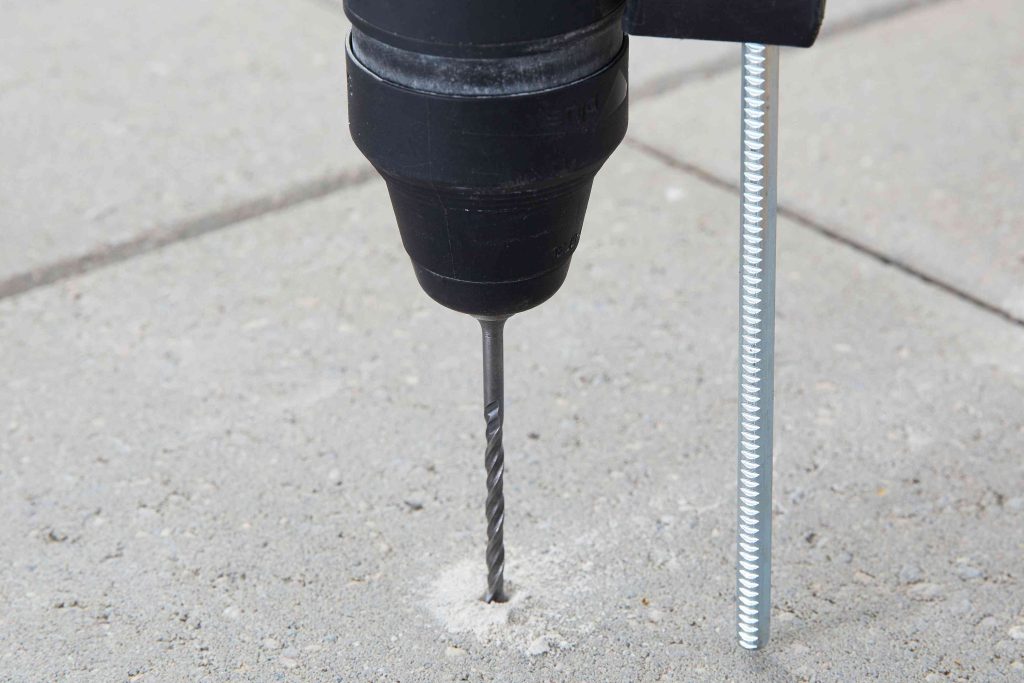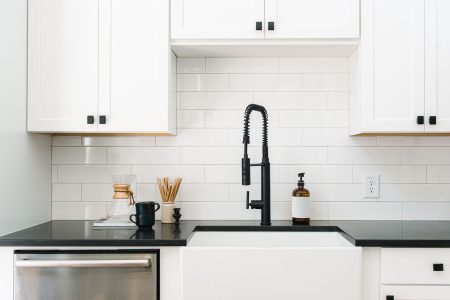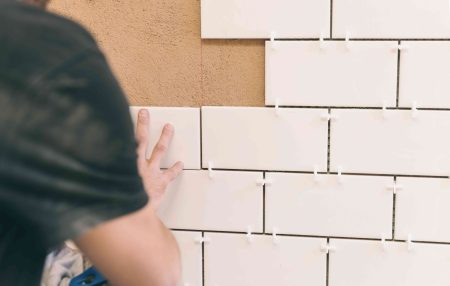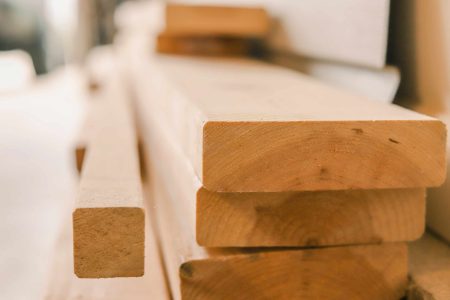For projects around the home, it is sometimes necessary to drill into concrete. This can be daunting because concrete is notoriously difficult to drill. But with the right tools and a few helpful techniques, you can learn how to drill into concrete successfully and with less effort than you may imagine.
Drilling into concrete is difficult because concrete is dense, hard, and has embedded aggregate stones that can be obstacles to the drill bit. Drilling can quickly dull drill bits. When the bit encounters aggregate, the bit drags even more. Hammer drills are the best tool for drilling into concrete because they can pulverize concrete.
Safety Considerations
Always use safety gear when drilling into concrete: hearing protection, eye protection, a dust mask or respirator, heavy gloves, boots, and long sleeves.
Click Play to Learn How to Drill Into Concrete to Drive Nails
What You’ll Need
Equipment / Tools
- Hammer drill
- Corded or cordless rotary drill
- Carbide-tipped masonry bits
- Center punch or nailset
- Hammer
- Shop vacuum with a HEPA filter and bag
- Safety gear
Materials
- Concrete (as needed for your project)
Instructions
How to Drill Into Concrete
-
Choose the Best Tools
- Hammer drill: The preferred tool for drilling into concrete is a hammer drill. A hammer drill is different from an ordinary rotary drill. Like a rotary drill, the hammer drill rotates. Unlike a rotary drill, it hammers while it rotates. Hammering helps to pulverize the concrete, while the rotation forms the hole. Hammer drills are available in both corded and cordless versions. Most hammer drills have two modes: simultaneous hammer/drill mode and drill-only mode.
- Rotary drill: It is possible to drill into concrete with an ordinary rotary drill. Rotary drills take longer to drill into concrete than hammer drills and more physical effort is required. Excessive heat build-up can break the drill bit.
-
Create a Drilling Point
It can be difficult to begin a hole on smooth concrete as the bit has a tendency to slip from the desired spot. Lightly tap a center punch or nailset with a hammer to create a tiny indent on the concrete.
-
Install the Depth Stop
Adjust the depth stop on the side of your drill to the depth of the intended hole.
Alternatively, you can measure the depth of the hole on the drill bit with a tape measure. Then, wrap tape above that section of the bit to indicate where you should stop drilling.
-
Add the Drill Bit to the Drill
Hammer drills often use a chuck-key system of securing the bit in the drill. Open the chuck jaws with the key, insert the bit, then turn the chuck key clockwise to tighten the bit in place.
If you are using a rotary drill, it may have a keyless chuck. Open the chuck by hand by turning it counterclockwise (as if opening a jar). Insert the bit. Then turn clockwise to tighten the bit.
-
Set Up the Shop Vacuum (Optional)
If you plan to use a shop vacuum, place its nozzle within 2 inches of the drill point. If you are drilling into a concrete floor or slab, you can usually kneel lightly on the nozzle to hold it in place. Or you may wish to place a heavy object over the nozzle to stabilize it. Turn on the vacuum.
-
Begin Drilling Slowly
Squeeze the trigger gently to begin rotating the bit at a slow speed. At this point, only press lightly on the drill; let the drill do most of the work.
-
Take Frequent Breaks
When using a hammer drill to drill into concrete, it is beneficial to take breaks. When using a rotary drill, it is necessary. Breaks allow the bit to cool down and give you a chance to further vacuum out debris from the hole. Check the condition of the bit during the break to make sure that it is not broken or overly dull.
When to Call a Professional
If you have a complex project or need many holes drilled into concrete, it’s best to call in a professional. A masonry contractor will understand the composition of the concrete (some concrete can be harder than others) and whether there are rebar, cables, or other obstructions in the area that require caution when drilling. Depending on the aggregate, a professional will have all the right tool bits to make the correct holes.
Tips For Drilling Concrete
- Since drilling into concrete is laborious, you’ll want to drill only as far as you need. Limit the depth of the hole by using the depth stop rod included on most hammer drills and some rotary drills.
- Apply less pressure when drilling into lighter-weight concrete or brick to avoid cracking it.
- Using an auxiliary handle on the drill helps you apply more pressure to the drill while increasing safety. If your drill has an auxiliary handle, install it for this project.
Read the full article here









